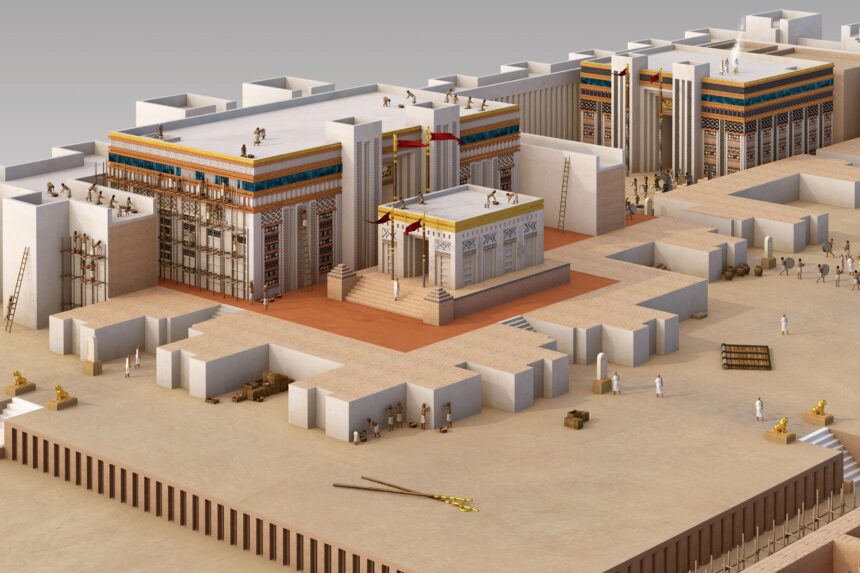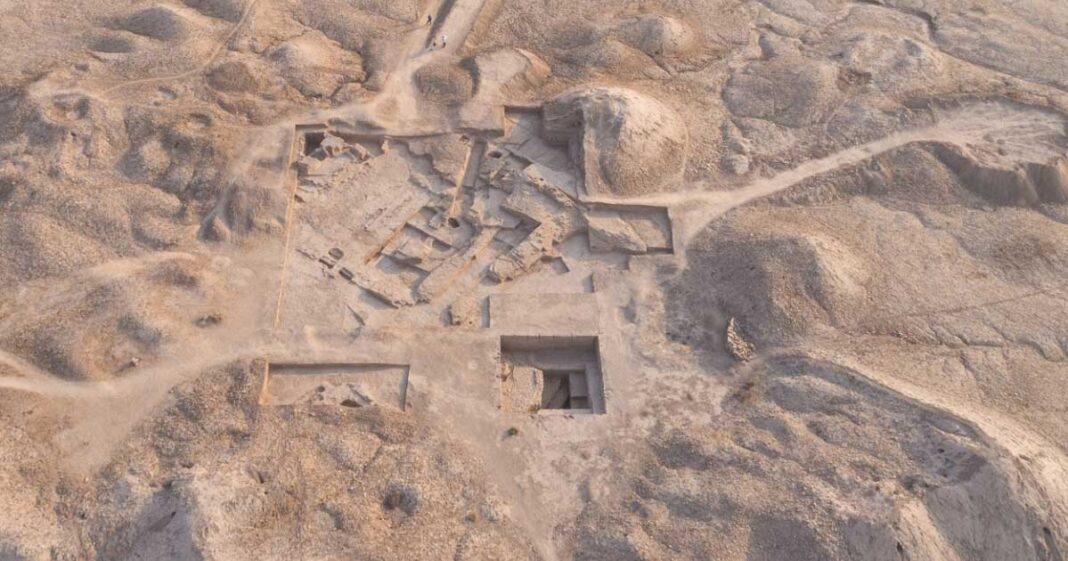After years of searching, a team of archaeologists from the British Museum has uncovered the lost remains of a Sumerian palace and temple in the ancient city of Girsu on the southern plains of Iraq. These ruins date back to the middle of the third millennium BC and represent a significant milestone in the history of Mesopotamian archaeology.
The Sumerians are credited with inventing writing and creating the first code of laws between 3,500 and 2,000 BC. Their achievements in art, religion, science, mathematics, architecture, and societal organization helped set a template for future civilization builders in the region.
The city of Girsu, also known as Tello, was a major center of Sumerian culture and society, and is considered one of the first cities in the world. Its discovery is significant because it sheds light on the early days of civilization and the origins of human culture.
Dr. Sebastien Rey, a British Museum curator and expert on ancient Mesopotamian civilization, led the team of archaeologists who made the discovery, calling it “one of the most important heritage sites in the world that very few people know about.” The find represents a major breakthrough in our understanding of human history and the development of civilization.
In 2015, the British Museum, Getty, and the State Board of Antiquities and Heritage in Iraq began a joint project to excavate Girsu as part of the broader Iraq Scheme, which aimed to safeguard historical sites from destruction by the Islamic State. Astonishingly, the archaeologists who arrived on the scene were the first to explore the site in over a century.
Despite being discovered in 1877 by French archaeologist Ernest de Sarzec, Girsu had been so extensively looted in various excavations, including the removal of over 100,000 cuneiform tablets, that it was unclear whether anything significant remained. Furthermore, conflict in the area throughout the 20th century made it difficult to access. Nonetheless, the dream of uncovering the site’s most crucial and foundational structures has now been realized.
“It’s really huge,” Dr. Rey told an interviewer from the United Kingdom’s national news service PA Media , in reference to his team’s remarkable achievements in the field at Girsu in 2022. “You take any manuals of archaeology students at university and you have a section on ancient Girsu and you read that nothing is left, the archaeology has been excavated away, basically, and that’s what I was told when I was a student.”
“I always felt that that was a pessimistic view,” he continued. “If you had a set of new tools (and) technology, you can go back to those damaged 19th century excavations.”
Dr. Rey’s belief in the possibilities turned out to be right, much to the delight of those who are fascinated by the story of the great Sumerian civilization and its links to the beginning of modern history in ancient Mesopotamia.
In 2022, drone footage captured at Tello, which is the present-day name for the ancient city of Girsu situated in the Dhi Qar Province of southern Iraq, unveiled previously undiscovered underground remains. Further excavation work confirmed that these were the mudbrick walls of the Lord Palace of the Kings, the central structure of the great city of Girsu that had been missing for centuries.

In addition, more than 200 cuneiform tablets were also unearthed during the excavation, buried under debris from excavations carried out in the 19th century. These texts turned out to be extensive administrative records of the activities that took place in the city.
The discovery of the chief temple of Girsu, Eninnu, was made by Dr. Rey and his team in 2015, although excavations were only concluded in 2022. The temple was dedicated to Ningirsu, the God of War in Mesopotamian mythology, who was the son of Enlil, the chief god of the Sumerian pantheon. Eninnu was a revered and frequently visited religious site in ancient Mesopotamia.

Dr. Rey expressed his excitement upon discovering the temple’s “door socket,” which he described as the heart of an ancient holy city akin to the Vatican in modern-day Rome. The team found a stone with an inscription of Gudea, the King, who was building a temple for Ningirsu. Dr. Rey’s team spent eight excavation seasons fully uncovering the temple structure before moving on to the newly discovered palace site last autumn.
Although the team had completed the initial excavation of the mudbrick walls of the palace, they had to suspend their operations for the rest of the year. They plan to resume their work in March 2023 and focus exclusively on the grand Sumerian palace for the rest of the year.
Who were Sumerians
The Sumerians were the inhabitants of Sumer, the earliest known civilisation in the historical region of Mesopotamia, located in modern-day southern Iraq. They built about a dozen city-states in the fourth millennium BC and were ancient pioneers in advancing writing, literature, hymns, and prayers. They also built the first known cities, created the first known code of law, and perfected several existing forms of technology, including the wheel, the plough, and mathematics.


